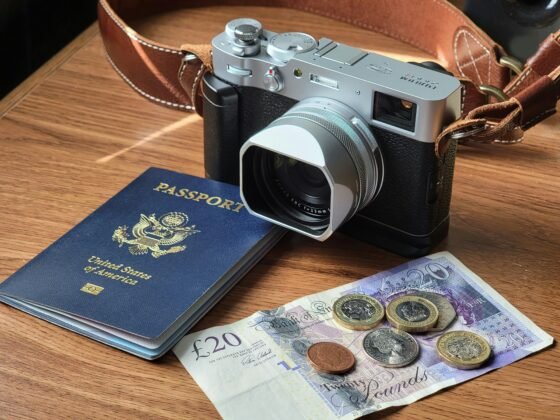Adventure travel is a thriving industry, boasting a global market value of $1.335 billion in 2020. As a niche form of travel, adventure travelers seek not only cultural sites but also adrenaline-pumping experiences. These may include trekking, mountain biking, and other activities that are surely unforgettable. It’s no surprise that adventure travel is on the bucket list of many individuals.
While adventure travel has captivated many, the senior traveler demographic is gaining prominence in this sector.
Rise of Adventure Travel Among Seniors
Overall, the global senior traveler market is expected to reach a staggering $3.79 trillion by 2030. A significant portion of this demographic are interested in adventure travel. However, as with any adventure, there are challenges to overcome. One prevalent issue among seniors that can’t be ignored is back pain, a condition that has the potential to dampen any adventuring spirit.
The Challenge: Adventure Travel with Back Pain
Source: Center of Disease and Control
In 2019, 39.0% of adults had back pain, 36.5% had lower limb pain, and 30.7% had upper limb pain in the past 3 months. Additionally, 50% to 80% of adults will experience at least one episode of back pain during their lifetime.
Given the high percentage of individuals grappling with lower back pain and the likelihood of experiencing it at some point, the challenge is evident. However, this shouldn’t discourage anyone, especially seniors, from pursuing their travel dreams. Instead, it’s about preparation and navigating the world of adventure with back pain.
Road Trips: An Ergonomic Nightmare and Ways to Alleviate
Road trips are among the most popular forms of adventure travel. With free form freedom to go wherever, road trips have been a staple of any would be adventurer. The low barrier of entry and chance to discover lesser known sites are also tantalizing.
Nevertheless, long drives can strain the lower back and pelvic areas. Maintaining proper road trip ergonomics is key to preventing stiffness and soreness. Here are some tips and tricks to alleviate back-pain and prevent long term injury:
Road Trip Accessories: Better Back Health Essentials for the Traveler
Car pillows, memory foam seat cushions, and lumbar support accessories can significantly alleviate road trip back pain. These provide ergonomic support, allowing you to maintain good posture and alignment during long drives.
Choosing the best pillow for back pain is the important factor of alleviating any sitting pain. This ensures a comfortable and long drive. In addition, making sure all seats have lumbar support promotes proper posture for long sitting times.Practicing overall road trip ergonomics boosts the effectiveness of these accessories.
Proper Posture and Seating for Better Comfort
Maintaining proper road trip posture is crucial. It helps prevent extended back soreness. This is especially important when driving as any distraction can cause roadside accidents.
- Position your seatback just slightly reclined, between 100-110 degrees. Avoid reclining too far back, as this can overarch your spine.
- Sit close enough to easily reach the steering wheel with a slight bend in your elbows. Extending your arms fully puts tension on the shoulders.
- Tilt the seat bottom to keep your hips above your knees. This takes pressure off the lower back.
- Adjust the seat height so your head is level with the top of the steering wheel. This gives you a clear line of sight.
- Make minor seat adjustments periodically, and move around to find the most comfortable position.
By following these tips you can sit comfortably for a longer period of time while traveling to your destination.
Foot Support: An Overlooked Aspect of Back Health
Properly supporting your feet while driving helps maintain spinal alignment and prevent back strain. Use a foot rest or rolled-up towel if your feet don’t touch the floor. Wear supportive shoes and consider orthotics or insoles for optimum foot support during long rides.
Strategizing Road Trip Breaks
Take a 15-minute break at least every 2 hours of driving. If you’re prone to back pain, consider taking breaks every 30-60 minutes. Get out of the car and walk around to stretch your legs and move your body. Simple exercises like ankle pumps, hamstring stretches, and torso twists can relieve tension. These simple exercises can prevent long term injury in the long run.
In-Seat Movements and Adjustments
Make small adjustments to your seat position during driving. Tilt your pelvis forward and arch your lower back slightly to decompress the spine. Do seated marches or ankle circles to boost circulation. Adjust your body frequently to avoid stiffness.
Cold and Heat Therapy: A Dual Approach
Use cold therapy like ice packs to reduce inflammation and swelling after long drives. Apply heat therapy with heating pads or warm baths to increase blood flow and relax muscles. Alternating hot and cold therapy can maximize pain relief benefits.
The Therapeutic Benefits of Post-Trip Massage
Massage is renowned for relieving lower back pain. Consider treating yourself to a professional massage after road trips. Investing in an at-home massage chair provides convenient, regular therapy. Massage improves flexibility, boosts circulation, and reduces muscle tension.
Whether through professional massage sessions or the convenience of an at-home massage chair, this therapy offers numerous advantages. After a long trip of adventuring, destress and calm down with this relaxing activity.
Final Thoughts: Making the Most of Your Road Trips
Seniors can explore exciting destinations without compromising their back health with the right preparation and preventive measures. Prioritize proper ergonomics, posture, accessories, breaks, exercises, and therapy before and after road trips. Don’t let back pain limit your adventures – with a proactive approach, the open road beckons.
Frequently Asked Questions (FAQs)
Can I still embark on adventurous travels if I have back pain?
Yes, you can pursue adventurous travels with back pain, but it’s essential to prepare and take precautions to minimize discomfort and strain. Consult with your healthcare provider and plan your itinerary with back-friendly considerations in mind.
What are some adventure destinations suitable for seniors?
Seniors with back pain can consider destinations that offer comfortable accommodations and accessible activities. Coastal getaways, cultural cities, and nature retreats can provide diverse yet manageable experiences. Also consider road tripping to nearby locales for a one of a kind experience.
How often should I take breaks during a road trip to prevent back pain?
Take a 15-minute break at least every 2 hours of driving. If prone to back pain, consider breaks every 30-60 minutes to stretch and move. If needed, take a break when you feel any significant pain to stretch.
What car accessories can help alleviate back pain during long drives?
Memory foam cushions, lumbar support pillows, and other ergonomic accessories provide extra support and comfort to prevent strain.
How can I ensure optimal seat positioning to avoid back pain?
Sit with your back just beyond upright, between 100-110 degrees, with your arms able to reach the wheel comfortably. Adjust as needed.












